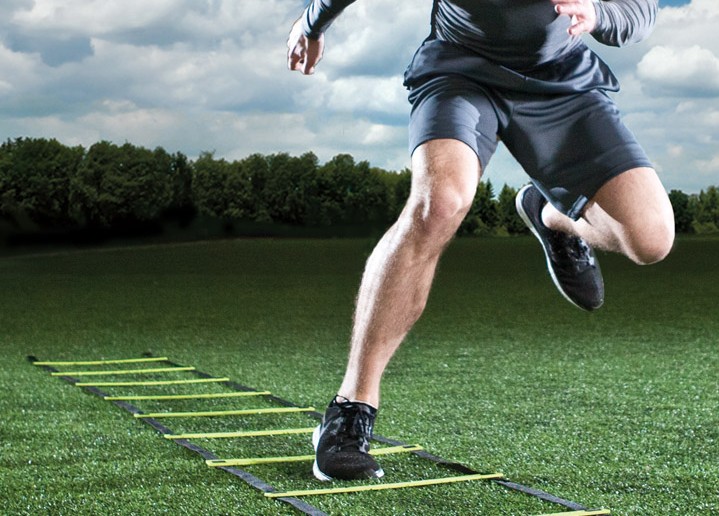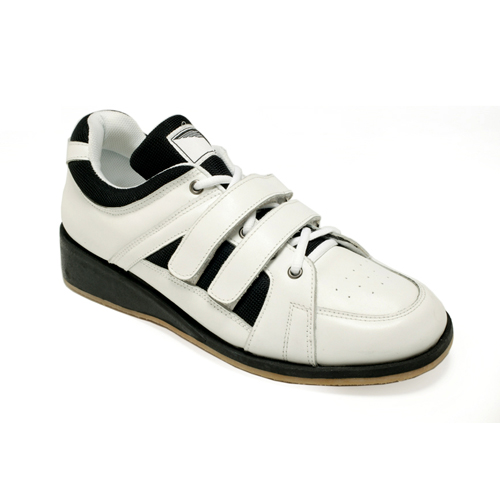Many athletes are either beginning or are in the middle of their off-season training. Speed training is an important component of the training of most athletes. The off-season can allow you to establish a base that lets you reach your potential in speed training or it can be a wasted opportunity. This article is going to provide some tips for an effective off-season speed program.
Tip #1: Be wary of drills
While working with one of my teams the other day, I got to listen to a speed training expert work with a group of middle school baseball players. The entire hour-long session was spent teaching them A, B, and C skips. The athletes never practiced running fast, never.
A few thoughts here. First, sprinting is an extremely specific skill. Second, sprinting in a sport situation is an even more specific skill. These skills require a lot of practice in order for us to get better at them. A lot of these drills are being taken out of their original context and are distractions.
A, B, and C skips have uses. They are useful for hurdlers. They are useful to develop some strength and endurance in the sprinting positions. But they do not resemble the sprinting motion. Joint angles, velocity of movement, and ground reaction forces are not similar to sprinting. So if they aren’t similar to sprinting, why spend a lot of time on them – doesn’t it make sense to spend time on sprinting instead?
Tip #2: Be wary of the equipment
If I sell exercise equipment for a living, my job is to convince you that you must have my equipment to improve performance. Likewise, if I’m selling my services as an athletic performance specialist then I need an edge to convince you to purchase my services. The common denominator here is that we usually use speed training equipment to accomplish all this.
Now, let me take a minute to talk about where this stuff came from. There’s an old idea out there that with speed training we reach something called the speed barrier. The idea behind this is that it’s a barrier you cannot penetrate to get faster. In other words, kind of a permanent plateau. There are essentially two ways to move past this; either by making sprinting more difficult or by making it easier. More difficult (i.e. resisted sprinting, uphill sprinting, that sort of thing), in theory, requires you to recruit more motor units and this eventually transfer to regular sprinting to make you faster. Less difficult (i.e. downhill sprinting, being towed, high speed treadmills, that sort of thing) allows you to learn how to run faster than normal, which eventually transfers to regular sprinting.
First, it’s unclear if the speed barrier even exists. If it does exist, we’re probably talking about elite sprinters who have been doing nothing but sprinting their entire lives. It’s unlikely that a 12-year old baseball player, for example, is there. Second, all of these pieces of equipment develop horrible running habits if a serious base does not exist – in other words they are often counterproductive if your base isn’t there.
Tip #3: Warm-up systematically
We know that sprinting athletes are at risk for injuring their hamstrings, shins, ankles, and groins. We also know that sprinting requires a lot of force application against the ground, quickly. Warming up properly can be a good time to help prevent some of these injuries while cueing the body to be prepared for the force application side of things.
Everyone does this differently, but I like to break my warm-up into two parts: the general and the specific. The general warm-up involves dynamic flexibility drills that start with the feet/ankles/shins and move up to the hips. I spend a lot of time with the feet/ankles/shins and hamstrings. The specific warm-up involves bounds, skips, mini hurdles, and quickness exercises (sprint five yards with an explosive first step – that sort of thing).
Tip #4: You need strong legs
Within limits, strength is important for running fast. Sprinting is about exerting force against the ground, this means that you have to be able to do this. Having said that, another important part of this deals with the hamstrings.
Sprinting athletes are plagued with hamstring strains. Today, the thinking is that this is due to the fact that the hamstrings aren’t strong enough in the lengthened position as the leg is cycling through and the hip is extending to drive the foot towards the ground.
Take these two thoughts and a few things are going to be important; squat variations, one-legged strength (lunges, step-ups, etc.), and hip extension exercises like Romanian deadlifts and good mornings. If you are not doing these things, then you are limiting your speed.
Tip #5: Run fast to get better at running fast
This is the single most important tip here, you have to practice sprinting to get better at it. Drills, toys, etc. are all distractions from this simple fact. Now, there are two broad schools of thought with track and field coaches. The first says that you begin your sprinting with longer distances to develop your endurance base then you gradually taper down to short distance sprints. The second says that you should begin with short distance sprints and gradually progress to longer ones as your fitness improves and your body adapts to sprinting. The reality is that both approaches work, both have developed Olympic medalists. So pick one that you like and get started!



